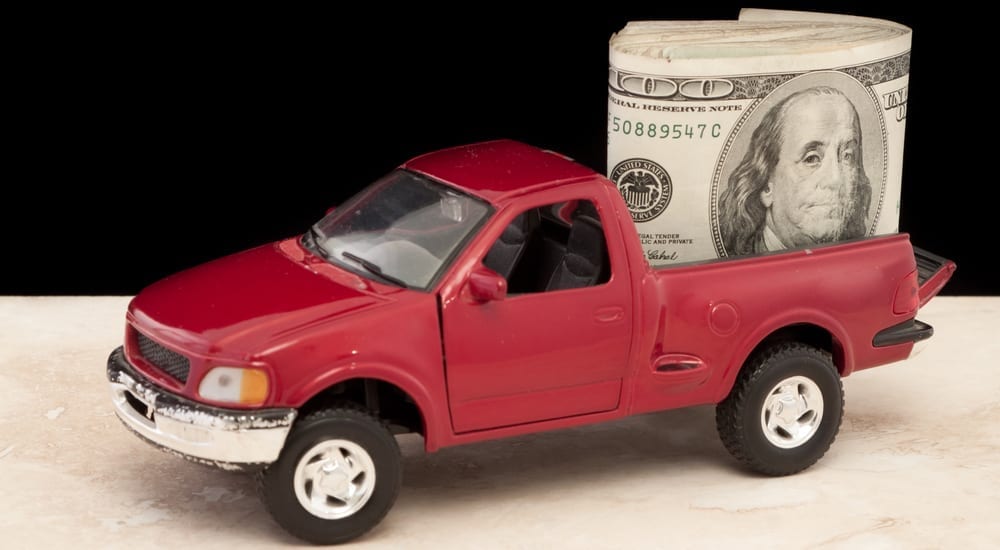Raise your hand if you’ve ever purchased a vehicle, offering a trade-in vehicle to reduce the overall expense. If you have, you’re far from being ‘all alone’.
In fact, it is estimated that a minimum of 47% of car buyers utilize a trade-in towards the purchase of a new vehicle. And while there are few verifiable statistics, it stands to reason that a large number of these car buyers may be ill-informed as to the actual trade-in value of their vehicle, or the process by which it is valued.
This presumption is encouraged by statistics showing that approximately 32% of car buyers are offering a trade-in vehicle that they are currently ‘upside down’ in. This means that the vehicles being traded are worth less than what the owners still owe on their auto loans. A staggeringly high number, it indicates that many ill-informed consumers are exposing themselves to further financial burden, paying the difference, in order to update their vehicle. With encouragement from subprime interest rates, extended loan terms, and lower down-payment allowances, this edges toward epidemic status, minimizing any benefit of offering the trade-in, in the first place.
Considering the wealth of resources available to today’s car buyers, it’s no surprise that countless hours are spent researching vehicles online before a buyer sets foot anywhere near a dealer lot. So why do so few exercise the same sense of cautionary prudence in researching their trade in, rather than an empowering a dealership to value it with their own best interests in mind?
Here are a few thoughts that a prospective car buyer may want to keep in mind, before offering a trade-in vehicle towards the purchase.
Actual Cash Value / Fair Market Value
First things first, set any expectation of sentiment aside. You might look in the rearview mirror and conjure memories of your infant child smiling at you from their car seat, but your sentimentality holds no actual value.
Your vehicle will be assessed on a number of conditions, including the vehicle’s:
- Age
- Mileage
- Measurable Wear and Tear
- Accident History (or lack thereof)
- Reconditioning Required for Resale
- Seasonality
- Demand
- Currently Market Value
It is worth pointing out that no two sets of eyes will evaluate the same vehicle, exactly the same way. You could drive your vehicle to ten different dealer lots, after valuing it on five different websites and it’s fairly likely that you’ll have fifteen different numbers. While this in mind, it’s important to empower yourself to ensure that any offers you’re actively considering are in the ballpark.
Use The Tools Available To You
It just makes good sense. When you were shopping for your new Chevy Equinox, you visited chevrolet.com, you read reviews on edmunds.com and anywhere you could find them, you hit multiple dealer websites to compare inventory and prices. This is where you apply that same kind of thorough research to your trade-in.
Kelley Blue Book rates as the most common ‘go-to’ resource. That said, you should keep in mind that KBB is a California-based publication, and may not be indicative of valuations throughout the rest of the country. Black Book is a well-liked alternative, as are companies such as TrueCar.
When you utilize such a site (or multiple sites, if you wish) it becomes important to enter information as accurately as possible. Full disclosure is key in terms of accurately valuing your vehicle, and having the most accurate number will empower you, should you find yourself presented with a conflicting number from a dealer.
Keep Resale In Mind
Once you’ve accepted that your valuation is an estimate, it’s also important to understand that (even if a dealer valued it identically) you won’t get that much. Why? Because you are offering a vehicle, which the dealer will be attempting to resell.
Understanding that the dealer may only be able to sell the vehicle for the Actual Value, or lower, they need to leave room for (i) profit, and (ii) the cost of refurbishing the vehicle for resale.
On average, dealers only mark-up pre-owned vehicles by $1,000 – $2,500 dollars. Based on this it is good practice to deduct $2,500 off the estimated value. This will give you an idea of what you might be entitled to before any refurbishing costs come into play. Any additional cost of refurbishing will be driven by the condition of the vehicle.
When Applied
With all of that in mind, let’s run a quick scenario. You are looking to trade in your 2012 Dodge Charger, which you originally bought new, for close to the $26,295 MSRP. Based on the valuation criteria (including the repair of a small accident) the five-year-old vehicle is only valued at $8,000.
Deduct $2,500 for resale markup and you’re down to $5,500. Plus, you have children so that interior has everything from stained upholstery to scuff marks throughout the cabin. This could take up to $1,500 to fix, meaning that you’re now entitled to $4,000 in trade-in.
Anyone who was expecting the full $8,000 valuation (or even worse, anything close to what they paid for it) is bound to be sorely disappointed. That said, you’re now empowered to debate any further deductions, that might be proposed by the dealer.
Now, imagine that you financed the vehicle on a 72-month loan. Because of a subprime credit score, your payments are significant at around $575. With fourteen months left, your remaining balance on the vehicle is somewhere around $8,050. At this point, your trade-in has little value, if any. In fact, you may very well have to pay the difference, on top of the downpayment for your new car (which you were looking to offset).
Either way, wouldn’t you want to know for sure?



